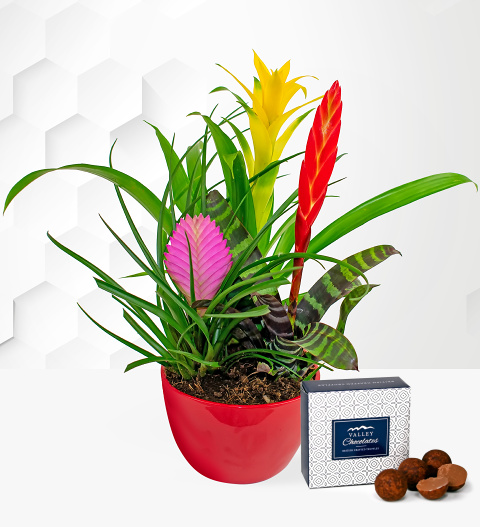
Tips for growing bromeliads
Bromeliads are beautiful plants with a truly unique appearance. Just like any other type of plant, growing bromeliads requires the right care and conditions. Here’s what you need to know about cultivating them in your home.
Soil
Plant gain nutrients from the soil in which they grow. It is also important for the soil to retain or drain water according to the preferences of the plant. In the case of bromeliads, fast-draining soil is best.
Light
The amount of light needed for growing bromeliads will depend on the type of plant that you have chosen. While some enjoy tropical sun, others do not and they will become scorched. For the most part, these plants enjoy a spot on the windowsill with lots of light but not direct sunlight. If the plant starts turning yellow, it might be receiving too much light. If they are dark green or elongated, this could indicate insufficient light.
Water
Yet another essential part of growing bromeliads, and any other plant for that matter. These plants have a central cup that can be filled if the light levels, humidity and temperature are suitable for the plant to thrive. It is important to flush this cup from time to time in order to prevent salts from building up. Alternatively, you can water around the base of the plant. Reduce watering frequency during the rest period. The plant should also never rest in standing water.
Fertilize
When growing bromeliads, liquid fertilizer is best. You can apply it at ½ or ¼ strength. Slow-release pellets can also be used in the central cup along with water. One pellet will be enough for the entire growing season.
Humidity and temperature
Temperature variations are not necessarily something to worry about. However, the warmer the temperature, the higher the humidity should be. They should not be exposed to temperatures above 80 degrees Fahrenheit or temperatures below 40 degrees Fahrenheit.
As you can see, growing bromeliads does not need to be particularly complicated. You can enjoy amazing success by following these simple yet effective tips. Remember to keep an eye on your plant. As soon as you notice anything out of the ordinary, it’s important to take action right away.
